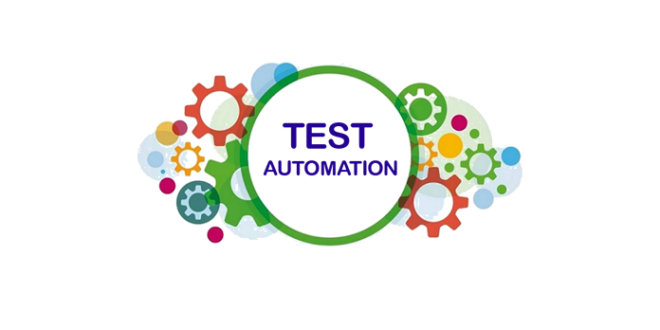From Manual to Automated Testing: A Comprehensive Guide to Transitioning Smoothly and Efficiently
In the world of software program testing, the shift from handbook to automated processes has become a progressively crucial transition for organizations looking for to enhance performance and accuracy in their testing methods. The trip from handbook to automated testing is not without its obstacles, yet when approached strategically and with a clear strategy in mind, the advantages can be substantial.
Benefits of Automated Evaluating
Automated screening supplies countless advantages, boosting performance and precision in software application advancement procedures. One primary benefit is the significant reduction in testing time. Automated examinations can be run at the same time on multiple gadgets and running systems, dramatically accelerating the screening phase contrasted to hand-operated screening. This enhanced performance permits faster feedback on the high quality of the software application, making it possible for programmers to determine and deal with issues quickly.
Moreover, automated screening makes sure a higher level of precision in finding problems. Consistency in screening is likewise enhanced, as automated tests perform the same steps precisely each time they are run.
Picking the Right Tools

To start with, assess your objectives and needs. Recognize the extent of your task, the modern technologies entailed, and the ability collection of your group. This analysis will certainly assist you identify the attributes and capabilities you need in your testing tools.
Secondly, consider the compatibility of the devices with your existing systems and procedures. Seamless assimilation with your current software advancement lifecycle is important to ensure a smooth change to automation.
Additionally, review the scalability and versatility of the tools. As your testing requires progress, the devices must be able to adapt and suit modifications effectively.
Finally, element in the assistance and area around the tools. Durable assistance and an energetic user area can supply important resources and support when implementing automated screening. By meticulously thinking about these aspects, you can choose the right devices that line up with your needs and set the phase for a successful change to automated testing.
Creating Efficient Examination Manuscripts
When crafting examination manuscripts, it is necessary to consider the details demands of the software being checked and ensure that the manuscripts resolve all essential functionalities. Clear and detailed calling conventions for examination manuscripts and examination situations can boost readability and maintainability. Furthermore, including error handling devices within the examination scripts can aid in determining and resolving problems without delay.
In addition, organizing test manuscripts into modular elements can boost reusability and scalability, minimizing redundancy and enhancing performance in examination script upkeep. Normal reviews and updates to check manuscripts are critical to keep speed with advancing software demands and capabilities. By complying with these concepts, testers can develop robust and effective test scripts that add dramatically to the success of automated testing processes.
Integrating Automation Into Workflows
Effective combination of automation devices into existing operations enhances and streamlines processes efficiency within software application growth cycles. When incorporating automation into workflows, it is important to determine repeated jobs that published here can be automated to conserve time and lower human mistake. By flawlessly incorporating automated testing tools like Selenium or Appium right into the software development lifecycle, teams can achieve faster feedback on code changes, leading to quicker pest discovery and resolution. This assimilation permits continual screening throughout the advancement process, guaranteeing that any issues are identified beforehand, leading to greater software program top quality. In addition, automation can be made use of to activate examinations immediately after each code commit, offering immediate validation and liberating testers to concentrate on even more complicated scenarios. Proper integration of automation tools calls for partnership between advancement, testing, and operations groups to establish a unified workflow that optimizes efficiency and effectiveness in supplying high-grade software program products.
Making Sure a Smooth Change
Successfully transitioning to automated screening includes precise planning and cautious implementation to maximize and reduce disturbances performance in the software advancement procedure - automation testing. To ensure a smooth transition, it is necessary to begin by conducting a complete analysis of the current testing processes and determining areas where automation can bring the most visit here considerable advantages. Involving with all stakeholders beforehand in the process, consisting of designers, testers, and project managers, is crucial for gathering assistance and buy-in for the automation effort
Interaction is crucial throughout this shift phase. Clear communication of the goals, benefits, and expectations of automated testing assists to handle any type of resistance or worries that might emerge. Additionally, giving adequate training and sources for group participants to upskill in automation devices and methods is crucial for making sure a successful transition.

Conclusion
To conclude, transitioning from handbook to automated testing provides many advantages, consisting of enhanced performance and dependability. By selecting the ideal tools, creating efficient examination scripts, and integrating automation perfectly into process, organizations can make sure a smooth and visit the website effective change. It is vital to welcome automation as a valuable asset in software testing procedures to boost overall high quality and productivity.
In the realm of software testing, the change from guidebook to automated procedures has ended up being a progressively important shift for organizations looking for to enhance effectiveness and precision in their testing methods. Automated tests can be run at the same time on multiple devices and running systems, substantially speeding up the screening stage compared to manual screening. Uniformity in testing is likewise improved, as automated examinations carry out the exact same steps specifically each time they are run.To ensure the effective application of selected screening tools, the creation of reliable examination scripts plays a vital duty in validating the functionality and performance of automated procedures - automation testing. By following these concepts, testers can produce efficient and robust examination scripts that contribute considerably to the success of automated screening processes